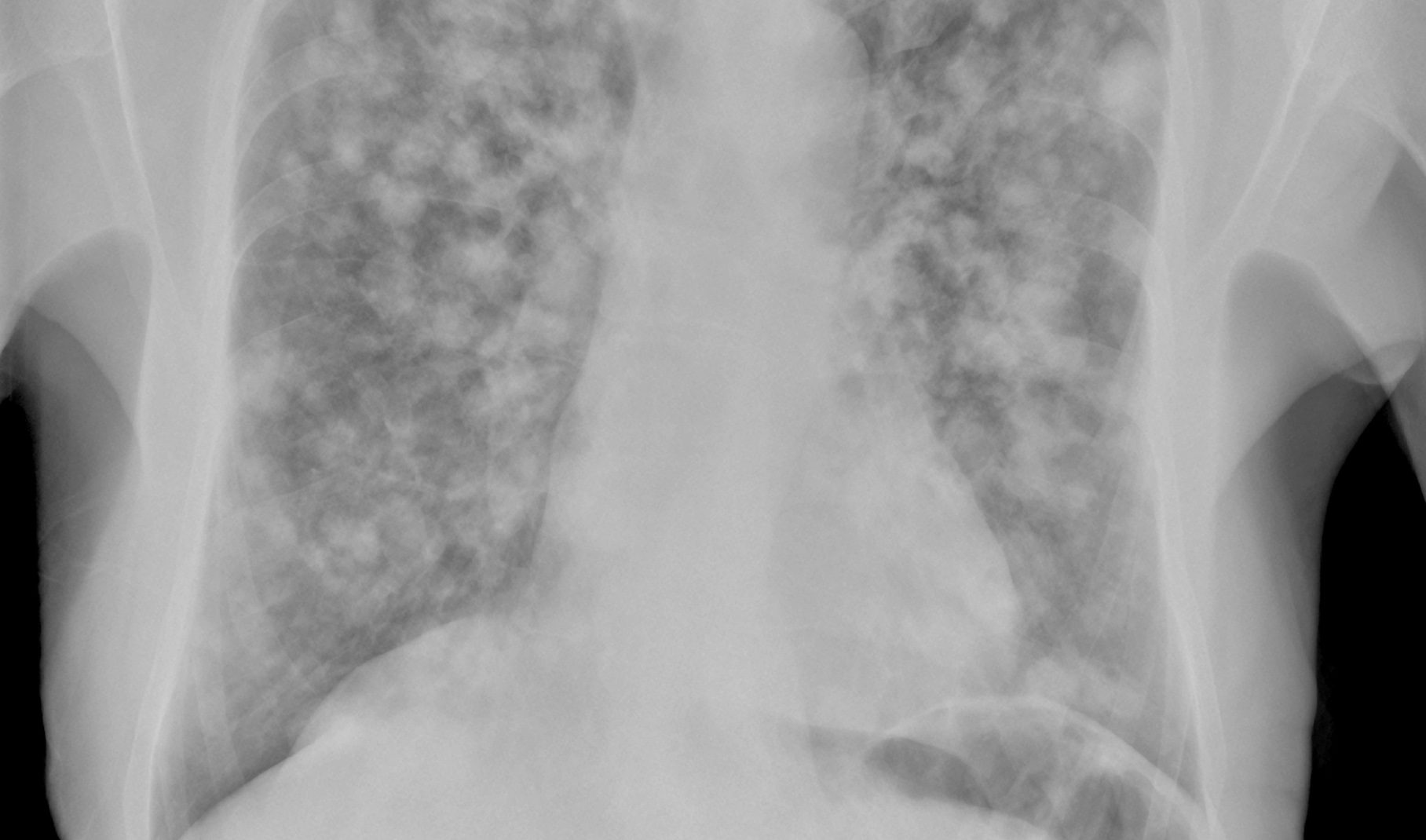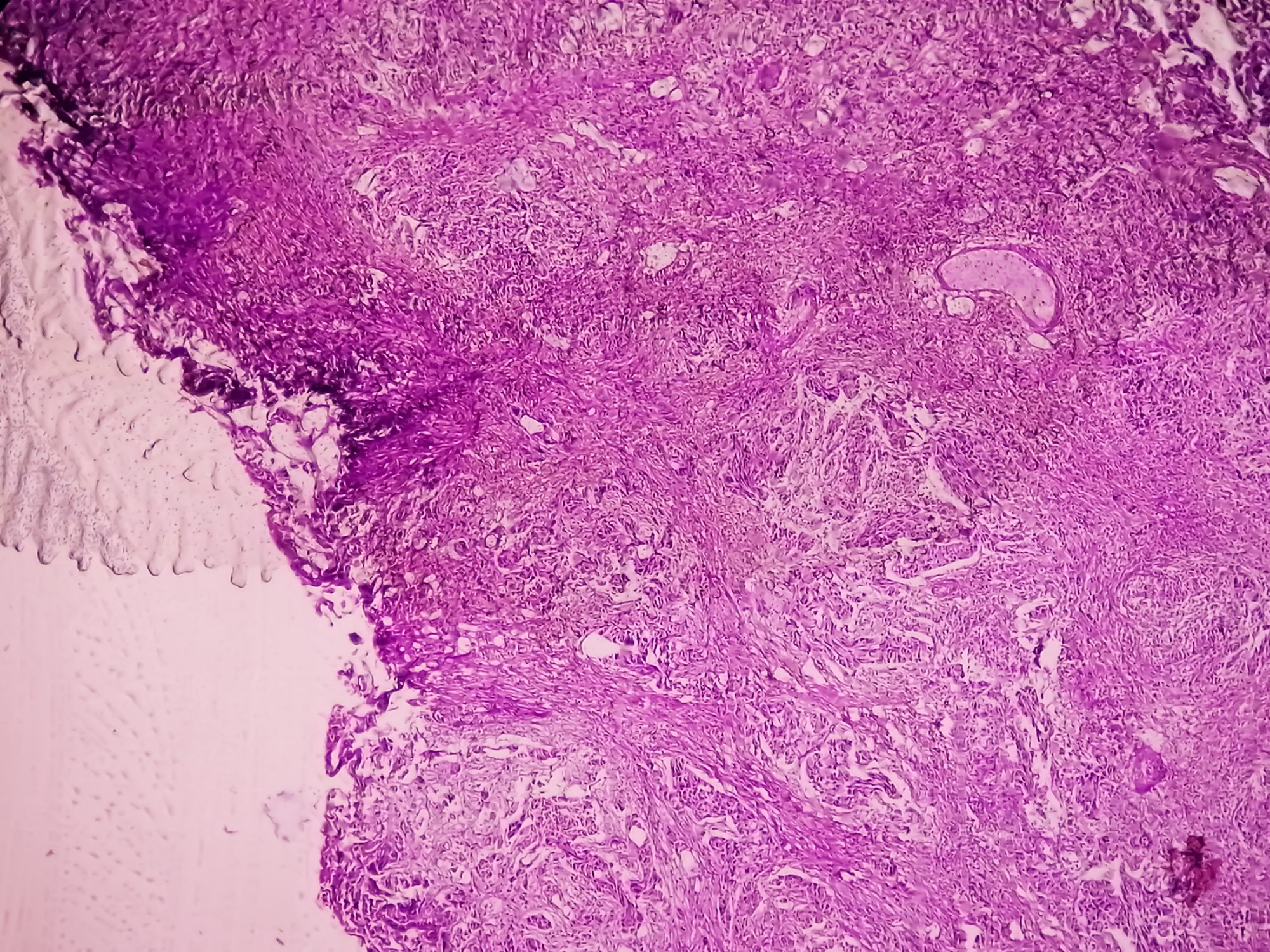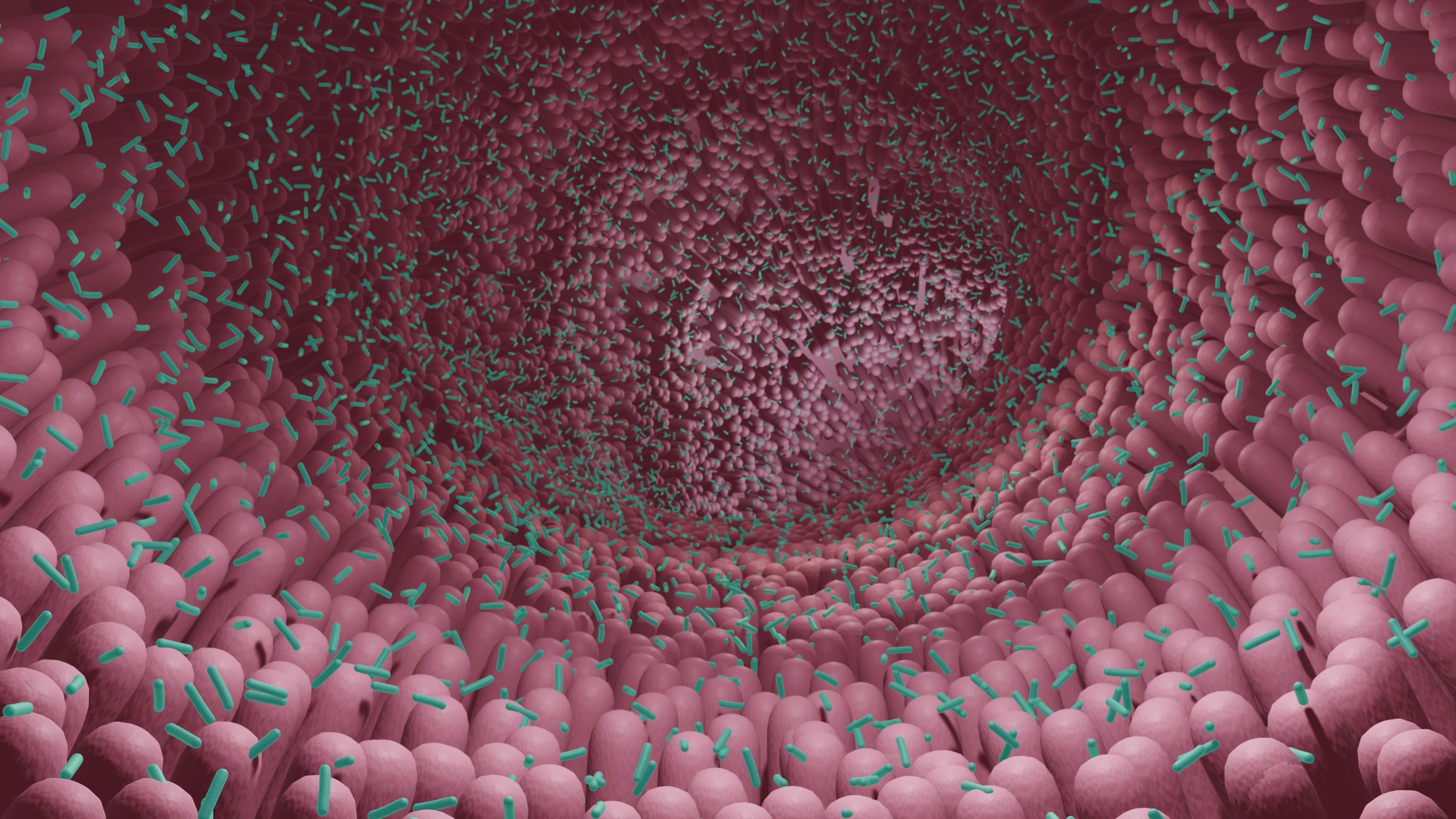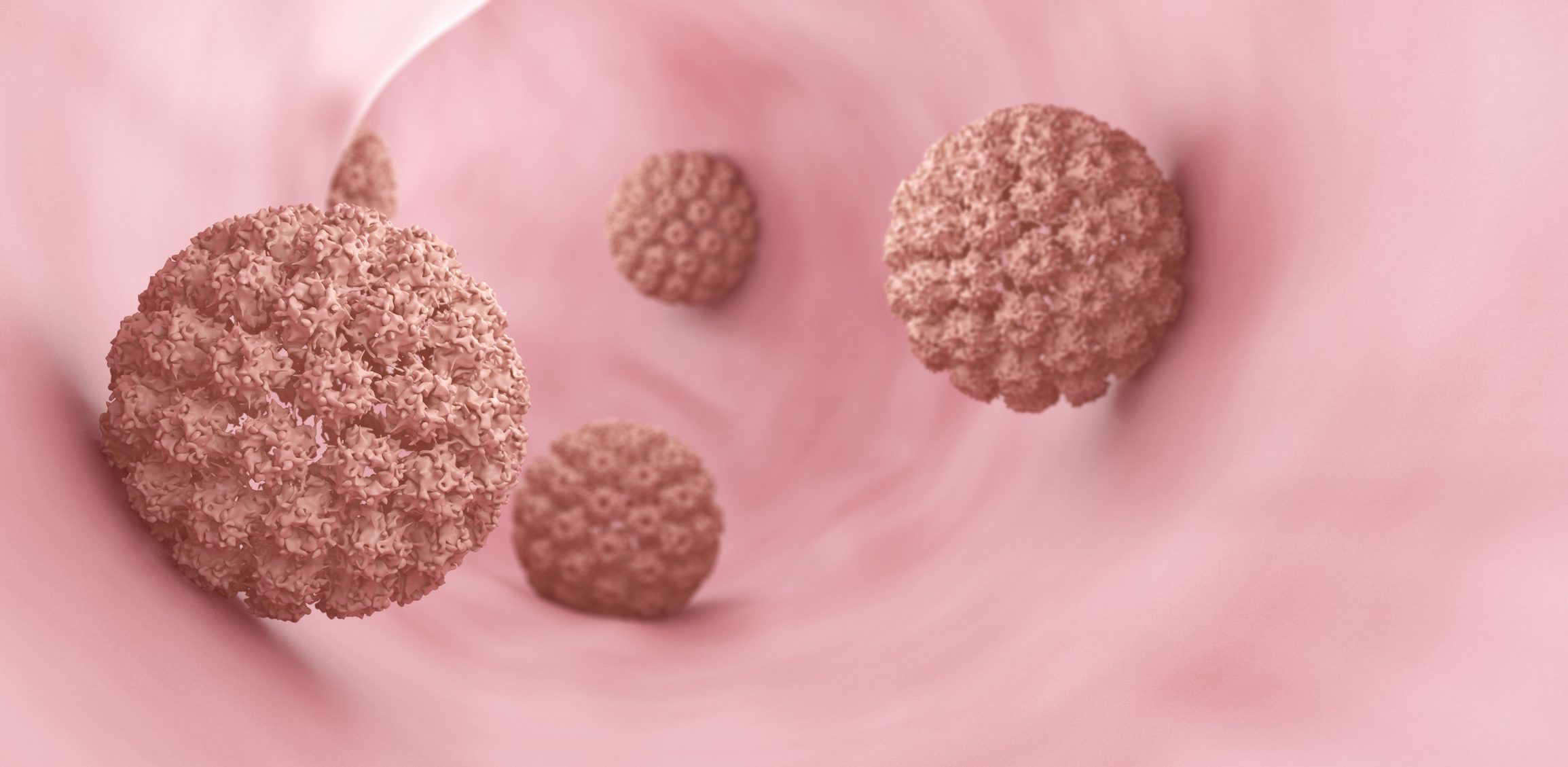Renal cell carcinoma (RCC) is the most common malignant disease of the kidney. There are currently no established predictive biomarkers to guide palliative therapy with checkpoint inhibitors (CPI), tyrosine kinase inhibitors (TKI) or their combinations. In the group of low-risk patients, monotherapy with a TKI is currently the treatment of choice if systemic therapy is indicated. In the group of intermediate and high-risk patients, the combination of nivolumab and ipilimumab is recommended in addition to the combination of CPI and TKI.
You can take the CME test in our learning platform after recommended review of the materials. Please click on the following button:
Renal cell carcinoma (RCC) is the most common malignant disease of the kidney. Around 430,000 new cases are reported worldwide every year, with 170,000 deaths as a result. Men have twice as high an incidence rate as women, with 26 per 100,000 men and 12 per 100,000 women [1]. When first diagnosed, most patients are in the localized or locally advanced stage, and around 16% are already initially metastatic [2].
Histomorphologically, RCC is a heterogeneous disease. Clear cell RCC (ccRCC) is the most common subtype and accounts for around 75% of cases, followed by papillary RCC (15%) and chromophobe RCC (10%) [3]. Rare subtypes include oncocytomas and Ductus Bellini carcinomas. Inactivation of the von Hippel-Lindau gene is the primary genetic alteration in ccRCC and leads to overactivation of hypoxia-inducible factors 1a and 2a (HIF-1a, HIF-2a). Frequent co-mutations occur in the PBRM1, SETD2 and BAP1 genes. Papillary RCC often shows alterations in the MET gene, while chromophobe RCC is characterized by aneuploidy and/or mutations in the TP53 and PTEN genes [4].
Biomarker
There are currently no established predictive biomarkers to guide palliative therapy with checkpoint inhibitors (CPI), tyrosine kinase inhibitors (TKI) or their combinations. Subgroup analyses of the CheckMate-214 and Keynote-426 studies showed that Programmed Cell Death Ligand-1 (PD-L1) positivity was only associated with numerically better survival rates (prognostically relevant), so that PD-L1 status continues to play no role in therapy management [5,6]. However, intensive research is being conducted into integrated biomarkers that could support clinical decision-making. The presence of sarcomatoid components indicates resistance to inhibitors of vascular endothelial growth factor (VEGF) and mammalian target of rapamycin (mTOR), but an improved response to CPI therapy, strongly supporting the use of CPI in such cases [7].
Palliative first-line therapy for clear cell renal cell carcinoma
Metastatic ccRCC is divided into three risk groups based on the International Metastatic RCC Database Consortium (IMDC) risk score (Table 1) [8]. Risk-adapted treatment recommendations are derived for each IMDC risk group (favorable, intermediate and unfavorable) [8]. In addition to the IMDC score, individual factors such as tumor burden, tumor kinetics, clinical symptoms and patient-related factors such as comorbidities and patient preferences should be taken into account.
Patients with a favorable risk and low tumor burden can often initially be offered a “watch-and-wait” strategy in addition to systemic therapy. Phase II study by Rini et al. and the observational study by Harrison et al. showed that watchful waiting is a safe alternative with good compliance [9,10]. However, in the absence of randomized studies, the initiation of systemic therapy or alternatively a watchful waiting strategy should be discussed in the interdisciplinary tumor board. High-risk situations according to IMDC as well as high tumor burden or existing clinical symptoms require the initiation of systemic therapy.
Recommendations for systemic therapy in the three risk groups defined by IMDC are based on several phase III studies. The following first-line therapy studies only included patients with ccRCC, with sunitinib as standard therapy. Table 2 summarizes the most important phase III studies on ccRCC.
1. dual immune checkpoint inhibition therapy (CPI)
The success of CPI therapy after failure of VEGF inhibition led to the investigation of its benefit in first-line therapy. The phase III CheckMate-214 study compared the efficacy of the combination of the PD-1 inhibitor nivolumab with the cytotoxic T-lymphocyte-associated protein 4 (CTLA-4) inhibitor ipilimumab versus sunitinib. The combination of ipilimumab and nivolumab significantly improved median progression-free survival (mPFS) and median overall survival (mOS) in the intermediate and unfavorable risk groups (mOS 47.0 vs. 26.6 months; hazard ratio [HR] 0.68; 95% confidence interval [CI]: 0.58-0.81). In the intention-to-treat population, which also included low-risk patients, the combined immunotherapy was also superior to sunitinib therapy (mOS 55.7 vs. 38.4 months; HR 0.72; 95% CI: 0.62-0.85). In the exploratory post-hoc analysis, the HR for OS in the patient group with a low IMDC risk score was 0.82 (95% CI 0.60-1.13). Grade III-IV adverse events occurred in 48% of patients in the experimental arm vs. 64% in the sunitinib arm [11].
2. combination of immune checkpoint inhibition (CPI) and tyrosine kinase inhibition (TKI)
Five randomized phase III studies aimed to establish the role of the combination of PD-1 and VEGF inhibitors.
The Keynote 426 study was the first to show the benefit of the combination of CPI and TKI in the first line of therapy for ccRCC. Pembrolizumab and axitinib, compared to the then standard of care sunitinib monotherapy, significantly extended PFS and OS (mOS 46.0 vs. 40.0 months; HR, 0.73, 95% CI, 0.60-0.88). This OS benefit was particularly notable in the intermediate and unfavorable risk groups, with no statistical difference in overall survival for favorable risk patients. Grade III-IV adverse events were observed in 63% of patients in the experimental arm, 11% of patients discontinued combination therapy due to adverse events [6].
The combination of nivolumab and cabozantinib evaluated in the CheckMate-9ER phase III study showed a significant OS advantage over sunitinib monotherapy (mOS 49.5 vs. 35.5 months; HR 0.70; 95% CI 0.56-0.87). This advantage was mainly due to the intermediate and unfavorable risk groups. Grade III-IV side effects were documented in 75% of patients in the experimental arm, 10% of patients discontinued both drugs due to side effects [12].
The CLEAR study randomized patients into three arms (lenvatinib plus everolimus vs. lenvatinib plus pembrolizumab vs. sunitinib monotherapy). Patients treated with lenvatinib and pembrolizumab had a significantly longer mPFS and mOS compared to sunitinib (mOS 53.7 vs. 54.3 months; HR 0.79; 95% CI, 0.63-0.99). Here, too, the survival advantage was mainly seen in the intermediate and unfavorable risk groups. Grade III-IV adverse events occurred in 81% of patients in the pembrolizumab and lenvatinib arm, 13% of patients had to discontinue combination therapy prematurely [13].
Another combination of CPI and TKI was evaluated in the JAVELIN-Renal-101 study. The combination of avelumab and axitinib led to a statistically significant PFS benefit compared to standard therapy with sunitinib. However, this advantage could not be translated into an OS benefit. The final data analysis showed only a numerical and no statistically significant advantage for the experimental arm (mOS 44.8 vs. 38.9 months; HR 0.88; 95% CI 0.75-1.04) [14].
In the COSMIC-313 study, randomization took place between the experimental arm with ipilimumab, nivolumab and cabozantinib and the standard arm with ipilimumab and nivolumab. Although the PFS was significantly longer with the triple therapy (mPFS NR vs. 11.3 months; HR 0.73; 95% CI, 0.57-0.94) and the response rate was higher in the experimental arm at 43%, this was at the expense of increasing side effects, with 79% grade III-IV side effects. Overall, 12% of patients in the experimental arm discontinued the triple therapy due to side effects. The OS data is currently still available from [15].
Subgroup analyses of the Keynote-426, CheckMate-9ER and CLEAR studies in patients with low-risk IMDC only showed benefits in response rate and PFS, but not in OS. Therefore, treatment with sunitinib can be considered in patients with a low risk of IMDC, especially if a rapid reduction in tumor burden is not a priority. Monotherapy also has the advantage of a relatively lower rate of side effects compared to CPI and TKI combinations. Another TKI can be used instead of sunitinib in this patient group. In the non-inferiority phase III COMPARZ study, pazopanib was non-inferior to sunitinib (HR for OS, 0.91; 95% CI: 0.76-1.08) [16].
3. immune checkpoint inhibition therapy as monotherapy
There is currently no evidence to support CPI monotherapy in first-line treatment. The phase II IMmotion150 study showed no benefit of atezolizumab compared to sunitinib in treatment-naïve patients [17]. In addition, the single-arm Keynote 427 study reported a relatively low PFS rate for pembrolizumab monotherapy [18]. Therefore, without randomized phase III data, first-line treatment with CPI monotherapy cannot currently be recommended. The treatment recommendation is summarized in Figure 1 [19].
Second-line and follow-up therapy for clear cell renal cell carcinoma
The choice of second-line therapy depends on the type of previous first-line therapy as well as the course of the disease and the tolerability of the primary therapy. If no CPI was used in first-line therapy, nivolumab is recommended. This recommendation is based on the results of the Phase III CheckMate-025 study. Here, nivolumab monotherapy was tested against the then standard everolimus in patients after failure of 1-2 lines of VEGF inhibition therapy. CPI achieved a longer OS compared to everolimus with relatively good tolerability (mOS 25.8 vs. 19.7 months; HR 0.73; 95% CI, 0.62-0.85) [20]. After previous CPI-TKI combination therapy, TKI monotherapy with cabozantinib is established. The METEOR study compared cabozantinib with everolimus after failure of primary VEGF inhibition. In this study, cabozantinib led to a significant extension of OS (mOS 21.4 vs. 17.1 months; HR 0.70; 95% CI 0.58-0.85) [21]. Second-line treatment with axitinib prolonged PFS compared to sorafenib, but did not improve OS [22]. As a further option, particularly in follow-up therapy after TKI monotherapy, the combination of lenvatinib and everolimus improved OS in TKI-pretreated patients (mOS 25.5 vs. 15.4 months; HR 0.51; 95% CI 0.30-0.88) [23].
Most patients already receive a dual CPI or a CPI-TKI combination in first-line therapy. After failure of CPI-TKI combinations, robust prospective data are lacking. Oncology societies recommend switching to alternative TKIs, such as switching from lenvatinib to cabozantinib and vice versa [24,25]. The addition of atezolizumab to cabozantinib after progression on CPI proved to be ineffective. Therefore, a re-challenge with an alternative CPI is currently not recommended [24]. After failure of first-line treatment with nivolumab, escalation to a dual CPI is also not recommended based on data from the HCRN-GU-16 study and the FRACTION-RCC study [26,27].
After failure of CPI and TKI, therapy with the HIF-2a inhibitor belzutifan, which is already approved for the treatment of VHL disease, can be considered. The LITESPARK-005 study showed that the oral HIF-2a inhibitor improved PFS compared to everolimus monotherapy (HR for PFS: 0.74; 95% CI 0.63-0.88), but without a significant impact on OS [28].
Metastatic clear cell renal cell carcinoma with sarcomatoid components
In patients with clear cell RCC with sarcomatoid components, a combination therapy of CPI and TKI or dual CPI is recommended based on subgroup analyses of the CheckMate-9ER and CheckMate-214 studies [5,12]. The combination of ipilimumab and nivolumab showed a particular benefit in this aggressive histological subgroup. In the post-hoc analysis of the CheckMate-214 study, this combination led to a significant OS benefit (mOS 48.6 vs. 14.2 months; HR: 0.36; 95% CI: 0.17-0.79) [29].
Treatment of non-clear cell renal cell carcinoma
The aforementioned studies focused primarily on ccRCC. The evidence base for non-clear cell RCC (ncRCC) is less robust due to the rarity of these diseases. However, there is evidence from several small phase II studies that support the activity of TKIs effective in ccRCC such as sunitinib, cabozantinib and everolimus in the ncRCC subgroup [30–32]. The SWOG-PAPMET study included patients with papillary RCC who were treated with either cabozantinib or sunitinib. Cabozantinib was superior to sunitinib in terms of PFS, but OS did not differ significantly between the treatment arms (mOS 20.0 vs. 16.4 months; HR 0.84; 95% CI 0.47-1.51) [32].
Similar to the studies on ccRCC, combinations of a TKI and CPI were also tested in the rare histological subgroups of RCC. The Phase II Keynote B61 study evaluated pembrolizumab plus lenvatinib in ncRCC (59% with papillary and 18% with chromophobe RCC). This combination showed an overall response of 54% in papillary RCC and 35% in chromophobe RCC. The 12-month PFS was 67% for papillary RCC and 53% for chromophobe RCC. The mOS was not achieved in the overall cohort [33]. In the CaboNivo study, an overall response of 48%, a PFS of 13.0 months and an OS of 28.0 months were documented in the group with papillary RCC [34].
Conclusion for practice: first-line therapy for ncRCC
- Combination therapies analogous to ccRCC useful in the first line of therapy
- Monotherapies with cabozantinib or sunitinib represent an alternative therapy in the first line
New therapeutic approaches
The radioimmunotherapeutic agent 177Lu-Girentuximabbelongs to the group of antibody-radioisotope conjugates. This antibody is directed against carbonic anhydrase IX, which is expressed in over 90% of ccRCC. Monotherapy stabilized the disease in 57% of patients and led to partial remission in 7% of patients [35]. The combination of lutetium-girentuximab, cabozantinib and nivolumab is currently being tested as a first-line therapy for ccRCC (NCT05663710). Further Phase I studies are investigating a CAR-T cell product directed against CD70, CTX130. The Phase I study by Pal et al. reported disease stabilization in 81% of patients with relapsed ccRCC [36]. New molecules against HIF-2a, such as DFF332, are also being investigated in Phase I studies (NCT04895748).
Conclusion
Renal cell carcinoma is a heterogeneous tumor disease in which a relevant proportion of cases are diagnosed at an advanced and metastatic stage. CPI and TKI are the backbone of palliative systemic therapy. While no predictive biomarkers are currently available to guide therapy with CPI or TKIs, ongoing research aims to identify such markers. First-line treatment recommendations for metastatic ccRCC are based on the IMDC risk score, with combination therapies of CPI and TKI or dual CPI therapies showing significant survival benefits, particularly in the intermediate and unfavorable risk groups. Second-line treatment options after first-line failure include nivolumab, cabozantinib, lenvatinib, everolimus and now also belzutifan, depending on the first-line treatment received. Patients with sarcomatoid parts benefit significantly from the use of CPI. New treatments such as 177Lu-girentuximaband CD70-targeted CAR-T cells are showing promising results in clinical trials and could expand the therapeutic arsenal for RCC.
Take-Home-Messages
- In the group of low-risk patients, a watchful waiting strategy can be discussed in addition to TKI monotherapy. In the presence of oligometastasis, local treatment procedures such as SBRT or metastasectomy may be discussed as a further option.
- In the group of low-risk patients, monotherapy with a TKI (either sunitinib or pazopanib) is currently the treatment of choice if systemic therapy is indicated. A combination of CPI and TKI is in principle an alternative and can be used in a selected group of patients.
- In the group of intermediate and high-risk patients, the combination of nivolumab and ipilimumab is recommended in addition to the combination of CPI and TKI based on the above-mentioned studies.
- Dual immunotherapy is associated with higher primary progression rates compared to CPI-TKI combinations. If there is a response, however, dual immunotherapy leads to relatively long PFS and OS.
- The CPI combination should be considered especially in patients without high therapy pressure. On the other hand, the CPI-TKI combination should be preferred in cases of high remission pressure due to the comparatively high ORR.
Literature:
- Bukavina L, et al: Epidemiology of Renal Cell Carcinoma: 2022 Update. Eur Urol 2022; 82: 529. https://pubmed.ncbi.nlm.nih.gov/36100483.
- Noone AMHN, Krapcho M, Miller D, et al: SEER cancer statistics review, 1975-2015. Bethesda, Md: National Cancer Institute. https://seer.cancer.gov/csr/1975_2015.
- Moch H, et al: The 2022 World Health Organization Classification of Tumours of the Urinary System and Male Genital Organs-Part A: Renal, Penile, and Testicular Tumours. Eur Urol 2022; 82: 458. https://pubmed.ncbi.nlm.nih.gov/35853783.
- The Cancer Genome Atlas Research Network. Comprehensive molecular characterization of clear cell renal cell carcinoma. Nature 2013; 499: 4349. doi: 10.1038/nature12222.
- Motzer RJ, McDermott DF, Escudier B, et al: Conditional survival and long-term efficacy with nivolumab plus ipilimumab versus sunitinib in patients with advanced renal cell carcinoma. Cancer 2022; 128(11): 2085-2097. doi: 10.1002/cncr.34180.
- Plimack ER, et al: Pembrolizumab Plus Axitinib Versus Sunitinib as First-line Treatment of Advanced Renal Cell Carcinoma: 43-month Follow-up of the Phase 3 KEYNOTE-426 Study. European Urology vol. 84.5 (2023): 449-454. doi: 10.1016/j.eururo.2023.06.006.
- Rini BI, et al: Long-term outcomes with nivolumab plus ipilimumab versus sunitinib in first-line treatment of patients with advanced sarcomatoid renal cell carcinoma. J Immunother Cancer 2022; 10. https://pubmed.ncbi.nlm.nih.gov/36549781.
- Heng DY, et al: External validation and comparison with other models of the International Metastatic Renal-Cell Carcinoma Database Consortium prognostic model: a population-based study. Lancet Oncol, 2013. 14: 141.
- Rini, et al: Lancet Oncol 2016 Sep;17(9): 1317-1324.
doi: 10.1016/S1470-2045(16)30196-6. Epub 2016 Aug 3. - Harrison MR, et al: Active surveillance of metastatic renal cell carcinoma: Results from a prospective observational study (MaRCC). Cancer, 2021. 127: 2204. https://pubmed.ncbi.nlm.nih.gov/33765337.
- Tannier, et al: Journal of Clinical Oncology, Volume 42, Number 4_suppl, https://doi.org/10.1200/JCO.2024.42.4_suppl.363
- Powles, et al: ESMO Open May 2024, https://doi.org/10.1016/j.esmoop.2024.102994.
- Motzer RJ, et al: Lenvatinib Plus Pembrolizumab Versus Sunitinib in First-Line Treatment of Advanced Renal Cell Carcinoma: Final Prespecified Overall Survival Analysis of CLEAR, a Phase III Study. JCO 42, 1222-1228(2024). doi: 10.1200/JCO.23.01569.
- Motzer RJ, et al: Avelumab + axitinib vs sunitinib in patients (pts) with advanced renal cell carcinoma (aRCC): Final overall survival (OS) analysis from the JAVELIN Renal 101 phase 3 trial. JCO 42, 4508-4508(2024). doi: 10.1200/JCO.2024.42.16_suppl.4508.
- Choueiri TK, et al: Cabozantinib plus Nivolumab and Ipilimumab in Renal-Cell Carcinoma. N Engl J Med 2023; 388: 1767.
https://pubmed.ncbi.nlm.nih.gov/37163623. - Motzer RJ, et al: Pazopanib versus sunitinib in metastatic renal-cell carcinoma. N Engl J Med, 2013. 369: 722.
- McDermott DF, et al: Clinical activity and molecular correlates of response to atezolizumab alone or in combination with bevacizumab versus sunitinib in renal cell carcinoma. Nature medicine vol. 24,6 (2018): 749-757. doi: 10.1038/s41591-018-0053-3.
- McDermott DFL, Szylik JL, Donskov C, et al: Pembrolizumab monotherapy as first-line therapy in advanced clear cell renal cell carcinoma (accRCC): Results from cohort A of KEYNOTE-427.
J Clin Oncol, 2018. 36. https://ascopubs.org/doi/abs/10.1200/JCO.2018.36.15_suppl.4500 - Bergmann L, et al: Onkopedia Guideline Renal Cell Carcinoma (Hypernephroma); as of February 2024; Available at:
www.onkopedia.com/de/onkopedia/guidelines/nierenzellkarzinom-hypernephrom/@@guideline/html/index.html (last accessed on 27.06.2024). - Motzer RJ, et al: Nivolumab versus everolimus in patients with advanced renal cell carcinoma: Updated results with long-term follow-up of the randomized, open-label, phase 3 CheckMate 025 trial. Cancer vol. 126.18 (2020): 4156-4167. doi: 10.1002/cncr.33033.
- Motzer RJ, Escudier B, Powles T, et al: Long-term follow-up of overall survival for cabozantinib versus everolimus in advanced renal cell carcinoma. Br J Cancer 118, 1176-1178 (2018). https://doi.org/10.1038/s41416-018-0061-6.
- Motzer RJ, et al: Axitinib versus sorafenib as second-line treatment for advanced renal cell carcinoma: overall survival analysis and updated results from a randomized phase 3 trial. Lancet Oncol, 2013. 14: 552. https://pubmed.ncbi.nlm.nih.gov/23598172.
- Motzer RJ, Hutson TE, Glen H, et al: Lenvatinib, everolimus, and the combination in patients with metastatic renal cell carcinoma: a randomized, phase 2, open-label, multicentre trial. Lancet Oncol 2015;16: 1473-1482. doi: 10.1016/S1470-2045(15)00290-9.
- Pal SK, et al: Atezolizumab plus cabozantinib versus cabozantinib monotherapy for patients with renal cell carcinoma after progression with previous immune checkpoint inhibitor treatment (CONTACT-03): a multicentre, randomized, open-label, phase 3 trial. Lancet, 2023. 402: 185. https://pubmed.ncbi.nlm.nih.gov/37290461.
- Powles T, Albiges L, Bex A, et al, on behalf of the ESMO Guidelines Committee. Renal cell carcinoma: ESMO Clinical Practice Guideline for diagnosis, treatment and follow-up Published online: 22 May 2024 – Annals of Oncology.
- Choueiri TK, et al: FRACTION-RCC: nivolumab plus ipilimumab for advanced renal cell carcinoma after progression on immuno-oncology therapy. J Immunother Cancer, 2022. 10. https://pubmed.ncbi.nlm.nih.gov/36328377.
- Atkins MB, et al: Phase II Study of Nivolumab and Salvage Nivolumab/Ipilimumab in Treatment- Naive Patients With Advanced Clear Cell Renal Cell Carcinoma (HCRN GU16-260-Cohort A). J Clin Oncol, 2022. 40: 2913. https://pubmed.ncbi.nlm.nih.gov/35442713.
- Albiges L, Rini BI, Peltola K, et al: LBA88 belzutifan versus everolimus in participants (pts) with previously treated advanced clear cell renal cell carcinoma (ccRCC): randomized open-label phase III LITESPARK-005 study. Ann Oncol 2023; 34(suppl 2): S1329-S1330.
- Rini BI, et al: Long-term outcomes with nivolumab plus ipilimumab versus sunitinib in first-line treatment of patients with advanced sarcomatoid renal cell carcinoma. J Immunother Cancer, 2022. 10. https://pubmed.ncbi.nlm.nih.gov/36549781.
- Koh Y, et al: Phase II trial of everolimus for the treatment of nonclear-cell renal cell carcinoma. Ann Oncol 2013(24): 1026. https://pubmed.ncbi.nlm.nih.gov/23180114.
- Escudier B, et al: Open-label phase 2 trial of first-line everolimus monotherapy in patients with papillary metastatic renal cell carcinoma: RAPTOR final analysis. Eur J Cancer 2016. 69: 226.
https://pubmed.ncbi.nlm.nih.gov/27680407. - Pal SK, et al: A comparison of sunitinib with cabozantinib, crizotinib, and savolitinib for treatment of advanced papillary renal cell carcinoma: a randomized, open-label, phase 2 trial. Lancet, 2021. 397: 695. https://pubmed.ncbi.nlm.nih.gov/33592176.
- Albiges L, et al: Pembrolizumab plus lenvatinib as first-line therapy for advanced non-clear-cell renal cell carcinoma (KEYNOTE-B61): a single-arm, multicentre, phase 2 trial. Lancet Oncol, 2023. 24: 881. https://pubmed.ncbi.nlm.nih.gov/37451291.
- Lee CH, et al: Nivolumab plus cabozantinib in patients with non-clear cell renal cell carcinoma: Updated results from a phase 2 trial. Journal of Clinical Oncology, 2023. 41: 4537. https://ascopubs.org/doi/abs/10.1200/JCO.2023.41.16_suppl.4537.
- Muselaers CHJ, Boers-Sonderen MJ, van Oostenbrugge TJ, et al: Phase 2 Study of Lutetium 177-Labeled Anti-Carbonic Anhydrase IX Monoclonal Antibody Girentuximab in Patients with Advanced Renal Cell Carcinoma. Eur Urol 2016;69(5): 767-770.
- Cancer Discov 2024;14: 1-14; doi: 10.1158/2159-8290.CD-24-0102.
NEPHROLOGIE-SPECIAL 2024














